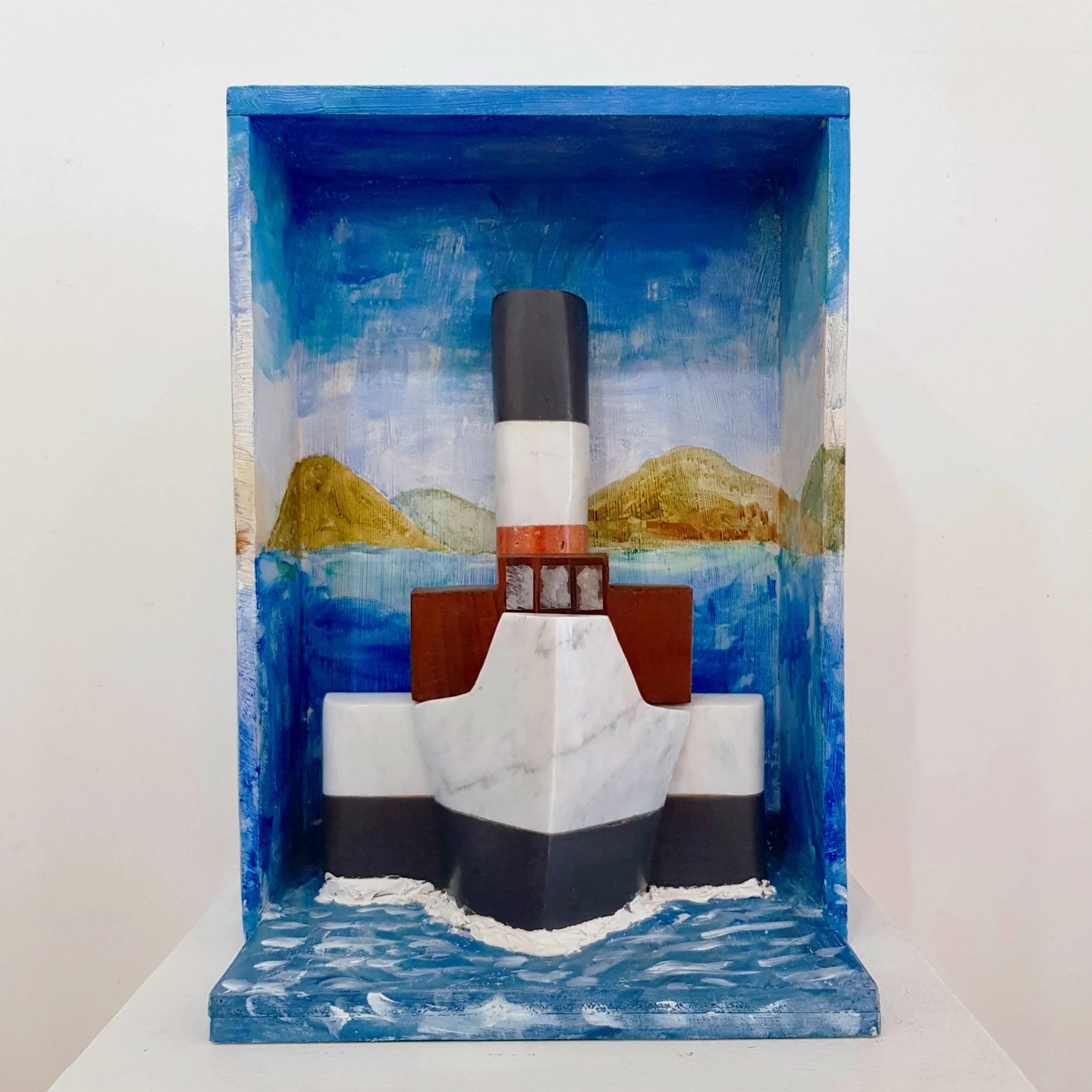‘Cancelled’ Artists - What Next?
25 November 2021
How does the market treat works by artists with histories of abuse?
Billy Jobling
Billy Jobling is Senior Writer and Researcher in the Post-War and Contemporary Art department at Christie's, London.
Rolf Harris sketches a self-portrait.
Credit: Brian Minkoff- London Pixels, CC BY-SA 3.0, via Wikimedia Commons.
Following his conviction for a grim catalogue of indecent assaults in 2014, Rolf Harris’s art plummeted in value. Large paintings that had once commanded as much as £90,000 disappeared from gallery walls. Some turned up on eBay at knockdown prices. Owners of limited-edition prints, often bought for a few hundred pounds with an eye towards investment, wondered whether they could, in good conscience, leave the pictures on display in their homes. The current location of Harris’s portrait of the Queen, commissioned by the BBC in 2005, remains unknown.
The problems Harris’s collectors face, needless to say, are trivial compared to the trauma endured by his victims. But in the age-old debate of whether art can be separated from the artist, the case points to some thorny questions. What would happen if a blue-chip contemporary artist, whose body of work might form a market worth tens or hundreds of cumulative millions, saw a similar downfall? And how much licence for deplorable conduct has been granted to those artists—some of them long dead—whose place in the canon seems secure?
Sculptures by Eric Gill adorn Westminster Cathedral, Broadcasting House and the League of Nations Building in Geneva. His Gill Sans typeface, made iconic by Penguin book covers and British Railways signage, is a hallmark of modernist design. Since the publication of Fiona MacCarthy’s 1989 biography, it has also been known that Gill routinely abused his two eldest teenage daughters, engaged in incest with his sisters and experimented with bestiality. ‘I have watched with some anxiety the long-term effect on Gill’s reputation’, MacCarthy reflected in 2006. ‘Does consciousness of artists’ reprehensible behaviour (Gill in 2006 would no doubt be in prison) put up a barrier between the viewer and the work? Or does knowledge of the artist’s life, fallibilities included, amplify and enrich our understanding of the art?’
Recent curatorial practice has put these questions in the spotlight. A 2017 exhibition at the Ditchling Museum of Art + Craft, which holds a large collection of Gill’s art, asked directly ‘whether knowledge of Gill’s disturbing biography affects our enjoyment and appreciation of his depiction of the human figure.’ Tate Britain’s gallery label for his sculpture Ecstasy (1910-11) was updated last year to similar effect. Any queasiness, meanwhile, doesn’t seem to have dented the demand for Gill’s works. Trade in his prints and sketches remains brisk, and his large-scale St Joan of Arc (1932) sold for a record £2,210,500 in 2015.
Paul Gauguin (1848–1903), Bathers in Tahiti, 1897, oil on sacking, H 73.3 x W 91.8 cm.
Credit: The Henry Barber Trust, The Barber Institute of Fine Arts, University of Birmingham.
The Metropolitan Museum of Art rejected a petition asking for Balthus’s painting Thérèse Dreaming (1938) to be removed from display in 2017. Thérèse sur une banquette (1939), which depicts the same subject, recently sold for more than $19,000,000 at auction. The artist, whose suggestive pictures of pubescent girls have caused controversy for decades, always protested that any erotic reading of his work reflected the viewer’s attitudes and desires rather than his own. This seems a disingenuous claim given his multiple affairs with teenage sitters. In 2014, an exhibition of Polaroids by Balthus at the Museum Folkwang in Essen was cancelled following public outcry. The photographs—taken of a model between the ages of eight and sixteen—perhaps made the relationship between the art and the life all too clear.
There is a power dynamic inherent in an artist’s depiction of live subjects, and Balthus’s works shouldn’t be viewed in isolation from his actions in the world. The same is true of paintings by Paul Gauguin, who—as the wall text of a 2019 National Gallery exhibition noted—fathered children with adolescent girls in French Polynesia, where he ‘undoubtedly exploited his position as a privileged Westerner to make the most of the sexual freedoms available to him.’ Many of Picasso’s portraits, similarly, reflect the avowed misogyny of a man who saw the women in his life as ‘machines for suffering.’ His genius doesn’t excuse his cruelty. ‘As an artist you may be extraordinary,’ his lover Dora Maar once told him, ‘but morally speaking you’re worthless.’
Sample of Gill Sans typeface, created by Eric Gill.
Different arguments might be made for the relevance of biography to understanding Gill’s typefaces, say, or even Harris’s landscapes. But if art is to be up for critique, enquiry and debate, it needs to be seen. In this sense, canonical prominence is a double-edged sword. To be continually looked at means to be subject to changing attitudes and fresh scrutiny over the years, for better and for worse. Historical distance also matters. Nobody is about to cancel Caravaggio for having killed a man in 1606. If a living artist and abuser stands to gain from the market for their works, however—Harris, for example, would receive a percentage of certain secondary sales under the UK’s Artist’s Resale Right—the relationship between their display and their value must be carefully considered. It’s fortunate, perhaps, that Harris’s anodyne paintings are themselves so easily forgettable.













